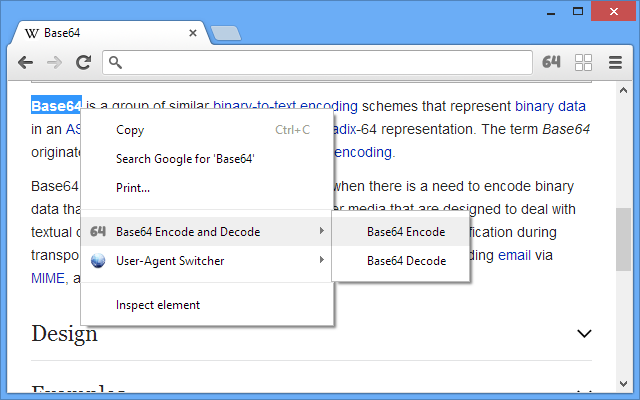

To get the number ofbase64 characters needed for a given binary data blob, take the length of inputand round up to the nearest multiple of 3. This givesus a 4:3 ratio, meaning there is 33 overhead for base64. NodeJS const base64 = require('base64-js') Ĭonst encodedData = omByteArray(data) Ĭonst decodedData = base64.toByteArray(encodedData) In Base64 encoding, 3 binary bytes are represented as 4 characters. String decodedString = new String(decodedData, "UTF-8") String encodedData = Base64.getEncoder().encodeToString(data) īyte decodedData = Base64.getDecoder().decode(encodedData) $decoded_data = base64_decode($encoded_data) īyte data = "hello world".getBytes("UTF-8")
C BASE64 DECODE HOW TO
Here is an example of how to encode and decode Base64 in Python, PHP, Java, NodeJS and C++:ĭecoded_data = base64.b64decode(encoded_data) In Python, PHP, Java, NodeJS, and C++, there are built-in libraries that can encode and decode Base64 data. Decoding reverses this process, converting the four ASCII characters back into three bytes of binary data. If you have openssl available to you (which most nix distros seem to have out-of-the-box these days), it provides robust, well-tested base64 encoding/decoding out of the box. Base64 encoding works by converting every three bytes of data into a group of four ASCII characters, using a fixed set of 64 characters. It is often used for transmitting data over protocols that are designed to handle only ASCII characters, such as email, HTTP, or FTP. You can always use our free Base64 Decoder to copy and paste text between different devicesīase64 encoding is a commonly used technique for encoding binary data as ASCII text.

How to encode and decode base64 in Python, PHP, Java, NodeJS and C++ Photo by Markus Spiske / Unsplash


 0 kommentar(er)
0 kommentar(er)
